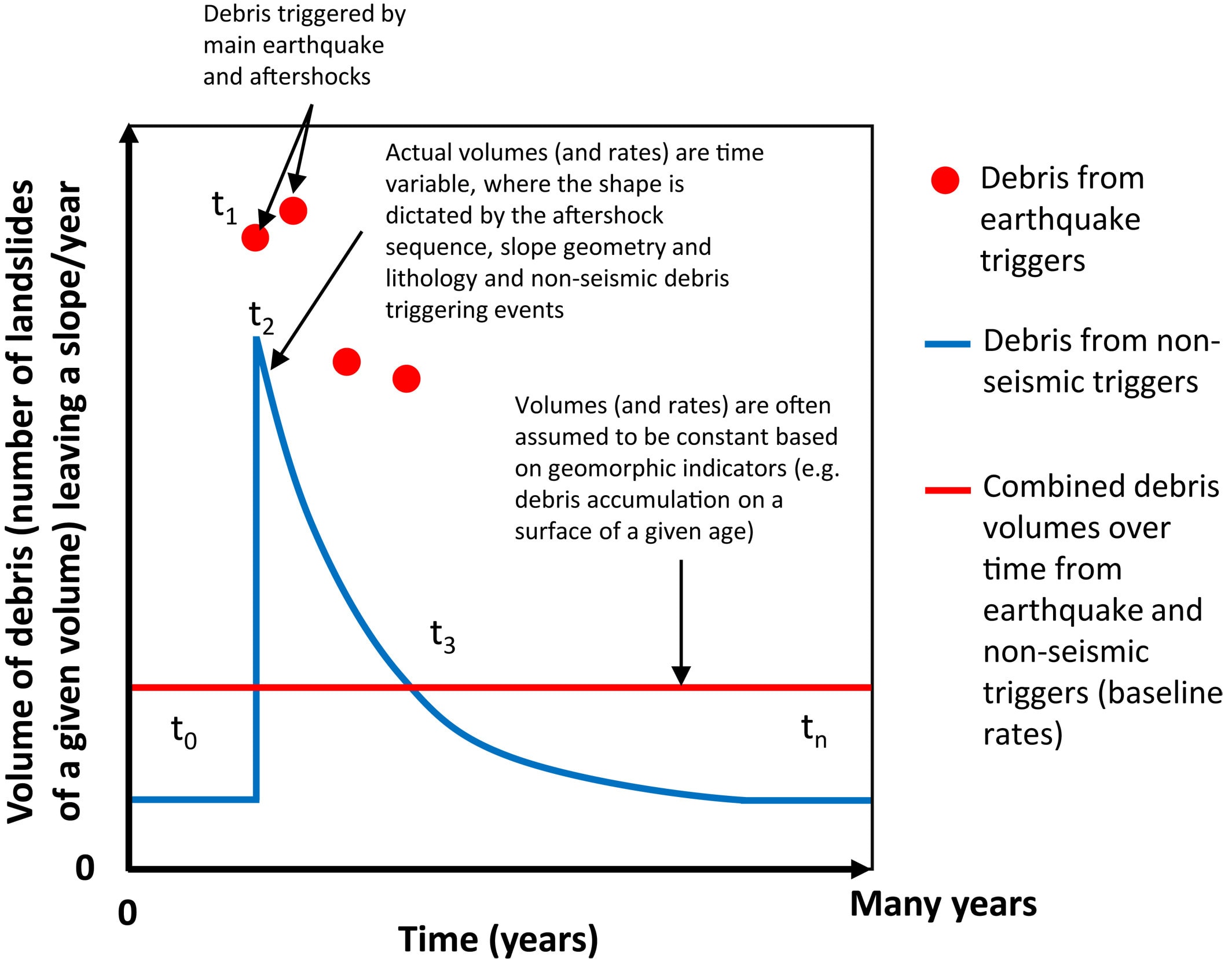
C. I. Massey,M. J. Olsen,J. Wartman,A. Senogles,B. Lukovic,B. A. Leshchinsky,G. Archibald,N. Litchfield,R. Van Dissen,S. de Vilder,C. Holden
First published: JGR Earth Surface, Volume 127, Issue 3, 16 March 2022
https://doi.org/10.1029/2021JF006400
Evidence from previous earthquakes suggests that the frequency of land sliding after a large earthquake is significantly higher than before it. Strong earthquakes cause slope cracking and generate landslide debris, which can be more readily remobilized post earthquake, creating new hazards, including further landslides and landslide dams. These hazards may persist for years and decades and represent a prolonged risk that the impacted communities must consider. Currently, the relative increase in land sliding and rate of decay during and after a major earthquake is rarely quantified, thus posing a knowledge gap for those rebuilding after a major earthquake. This paper explores high-resolution terrestrial laser scan models of slope surfaces and how these surfaces changed during and after strong earthquake shaking during the 2010–2011 Canterbury Earthquake Sequence (CES) in New Zealand. These surface “change” models were used to quantify the volumes of debris–rock and soil–that fell from these slopes during and after the CES. These data were used to establish a regional-scale, physical relationship between the volume of debris falling from the cliffs per earthquake or unit of time, per unit area of slope. Using the change models, we investigated the factors that control the temporal and spatial distribution of the rockfalls at the regional- and site-specific scales. At the regional scale, we found that the size of the slope and the relative increase in rockfall rates above pre-CES rates controlled the subsequent non-seismic rockfall decay time. At the site-specific scale, the main conclusions from this study are: (a) for earthquake triggers, the peak ground acceleration (a measure of earthquake ground shaking) was the most important variable in forecasting the probability of failure, followed by the relative elevation or height above the base of the slope; and (b) for both earthquake and nonseismic triggers, the probability of failure increases when the adjacent areas have failed previously, indicating that preconditioning of the slope to failure is a key factor driving subsequent rockfalls.
Head Office
1 Fairway Drive,
Avalon 5010
PO Box 30-368,
Lower Hutt 5040
New Zealand